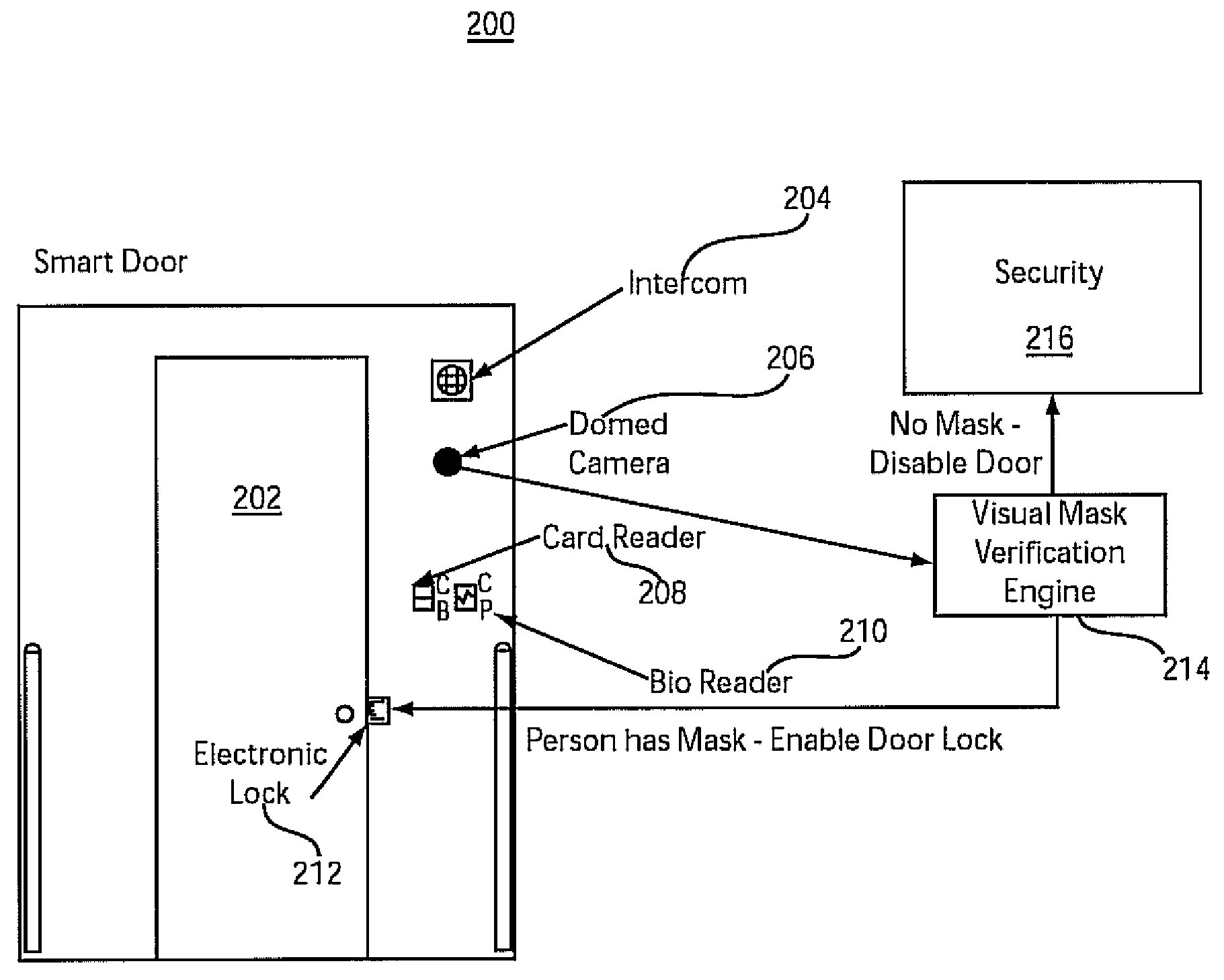Rule-based combination of a hierarchy of classifiers for occlusion detection
a classifier and hierarchy technology, applied in the field of image occlusion detection, can solve the problems of failure of computer vision methods, methods that only cope with partial occlusion, and full occlusion, and achieve the effect of reducing the number of false negatives
- Summary
- Abstract
- Description
- Claims
- Application Information
AI Technical Summary
Benefits of technology
Problems solved by technology
Method used
Image
Examples
Embodiment Construction
[0020]Present embodiments employ a rule-based combination of multiple classifiers for reporting whether an object is occluded or not in image sequences. In particular, the following principles demonstrate at least: a) A reliable face mask detection system that works even if the face is fully occluded. This method is based on the combination of a person and face classifiers. A similar idea could be applied for other tasks (such as detecting occluded or missing license plates). b) A keyframe selection technique for people captured in surveillance systems that output a face keyframe in case the face is visible, and a person keyframe in case the face is not visible.
[0021]Embodiments of the present invention can take the form of an entirely hardware embodiment, an entirely software embodiment or an embodiment including both hardware and software elements. In a preferred embodiment, the present invention is implemented in software, which includes but is not limited to firmware, resident s...
PUM
 Login to View More
Login to View More Abstract
Description
Claims
Application Information
 Login to View More
Login to View More - R&D
- Intellectual Property
- Life Sciences
- Materials
- Tech Scout
- Unparalleled Data Quality
- Higher Quality Content
- 60% Fewer Hallucinations
Browse by: Latest US Patents, China's latest patents, Technical Efficacy Thesaurus, Application Domain, Technology Topic, Popular Technical Reports.
© 2025 PatSnap. All rights reserved.Legal|Privacy policy|Modern Slavery Act Transparency Statement|Sitemap|About US| Contact US: help@patsnap.com



